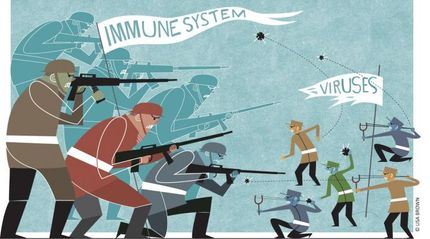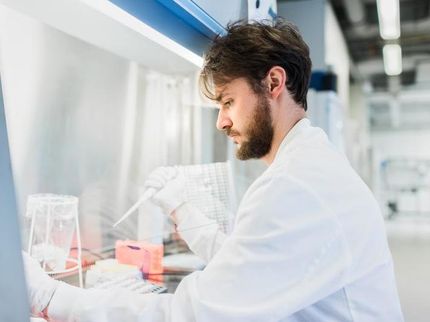Researchers find human protein that prevents H1N1 influenza infection
Advertisement
Howard Hughes Medical Institute researchers have identified a naturally occurring human protein that helps prevent infection by H1N1 influenza and other viruses, including West Nile and dengue virus. A research team led by Howard Hughes Medical Institute investigator Stephen J. Elledge and his colleague, Abraham Brass, discovered that human cells respond to infection by the H1N1 influenza virus by ramping up production of proteins that have unexpectedly powerful antiviral effects.
In cultured human cells, those proteins, whose functions were previously unknown, block the replication of H1N1 influenza virus, West Nile virus, and dengue virus. The unexpected discovery could lead to the development of more effective antiviral drugs, including prophylactic drugs that could be used to slow influenza transmission. The finding, reported in Cell, is the result of a collaborative effort by researchers at the Howard Hughes Medical Institute, Harvard Medical School, Massachusetts General Hospital, Yale Medical School, and the Wellcome Trust Sanger Institute in Cambridge, UK.
As with other viruses, the influenza virus has only a few genes of its own, and must commandeer proteins produced by its host cell to complete its life cycle. The current study began when Elledge and his colleagues set out to identify the host proteins that the H1N1 virus needs to enter cells and replicate inside them. To sift quickly through thousands of proteins, Elledge and his colleagues set up large arrays of cultured human cells, and then used a robotic device to deliver small strands of interfering RNA (siRNA) to each well in the array. Each siRNA strand was designed to block the expression of an individual gene, and thus the production of the corresponding protein.
For each such gene/protein "knockdown," the automated devices recorded the effect on H1N1 activity by measuring any change in the presence of viral protein on the surface on infected cells. Using this high-speed screening method, the researchers soon identified more than 120 genes whose expression is required for H1N1 to infect cells.
"But in the process of figuring that out, we found this other class of genes that actually have the opposite effect, so that if you get rid of them, influenza replicates much better," said Elledge, an HHMI investigator at Harvard Medical School. The virus-fighting genes in question code for three members of the Interferon-Inducible Transmembrane (IFITM) protein family: IFITM1, IFITM2 and IFITM3. First described in 1984, IFITMs were known to be produced at low levels in most cells, and at higher levels in cells exposed to immune-stimulating interferon proteins. But their functions had never been understood. Elledge and his colleagues began to suspect that they were natural antiviral proteins after the disruption of IFITM3 produced startling increases in H1N1 replication.
"The virus replicated five to ten times better when IFITM3 wasn't there," said Elledge. "The viral protein level was higher and it would replicate faster. IFITM3 really stood out in this regard." Elledge and his colleagues, who included HHMI investigator Erol Fikrig at Yale School of Medicine, found the same results for IFITM3 in other cell types, including human and mouse lung cells, and with different H1N1 strains. Then, instead of knocking down IFITM3 production in cells, they increased it – and found that it completely blocked H1N1 replication.
The gene for IFITM3 lies on chromosome 11, next to similar genes for IFITM1 and IFITM2. Although IFITM3 had the strongest and most consistent effects in tests, all three proteins, when overproduced, could block H1N1 and every other tested strain of the "Influenza A" virus type. To the researchers' surprise, increased production of these proteins also blocked the replication of completely different viruses, including strains of West Nile virus and dengue virus. The IFITMs were not effective against every virus tested; moreover, Elledge and his colleagues aren't sure precisely what these proteins evolved to do.
"They have different levels of activity on their own, so they might be more specific for different types of viruses," Elledge said. Either way, Elledge is convinced that the IFITMs represent a major part of the body's innate immune response to viruses. He and his colleagues found that most of the protective effects of interferons – which normally trigger an immune response in the presence of a pathogen and are also used therapeutically to boost the immune system - are lost when IFITM3 is absent from H1N1-infected cells.

























































